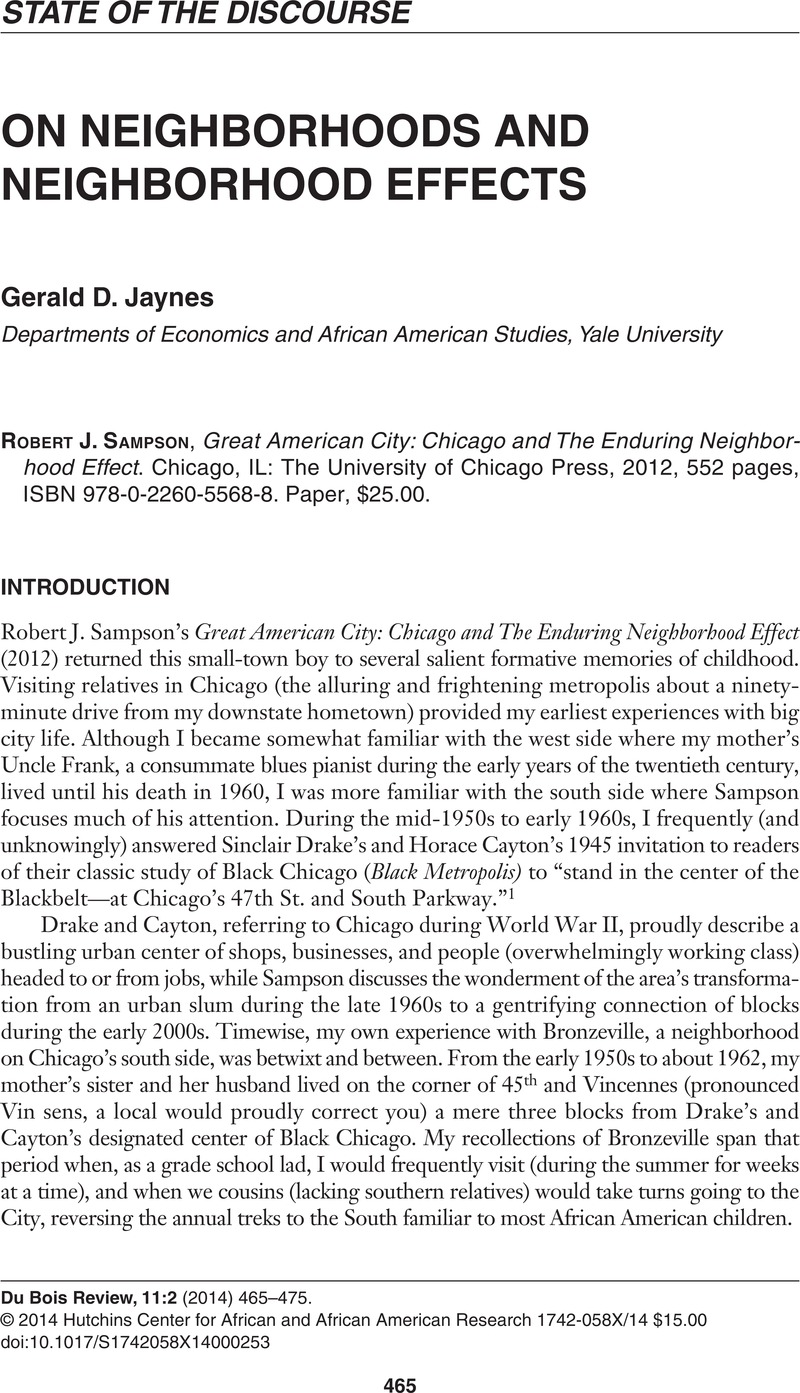No CrossRef data available.
Article contents
ON NEIGHBORHOODS AND NEIGHBORHOOD EFFECTS
Published online by Cambridge University Press: 29 December 2014
Abstract
An abstract is not available for this content so a preview has been provided. Please use the Get access link above for information on how to access this content.

- Type
- State of the Discourse
- Information
- Copyright
- Copyright © Hutchins Center for African and African American Research 2014
References
REFERENCES
Graubard, Stephen R. (Ed.) (1968). Ways out of the Ghetto. Daedalus, 97(4): 1315–1409.Google Scholar
Jaynes, Gerald D. and Williams, Robin M. (1989). A Common Destiny: Blacks and American Society, Washington, DC: National Academy Press.Google Scholar
Jordan, Brad aka Scarface (1994). The Diary, “Mind Playin ‘Tricks’ 94.” Rap a Lot Records.Google Scholar
McRoberts, Omar M. (2003). Streets of Glory: Church and Community in a Black Urban Neighborhood. Chicago, IL: University of Chicago Press.Google Scholar
Myers, Samuel L. and Phillips, Kenneth E. (1979). Housing Segregation and Black Employment: Another Look at the Ghetto Dispersal Strategy. American Economic Review, 69(2): 298–302.Google Scholar




